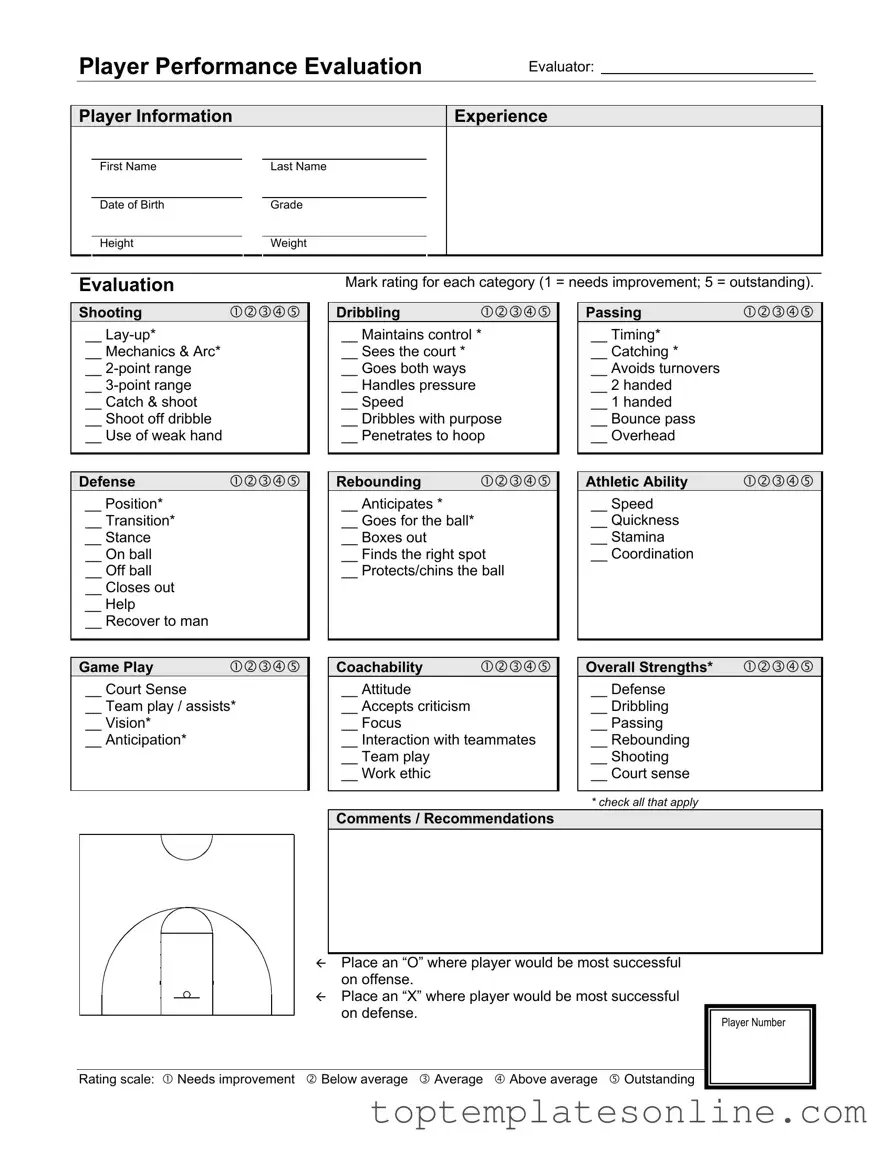The Basketball Evaluation form serves as a comprehensive tool designed to assess various aspects of a player's performance on the court. This form encompasses multiple categories, including shooting, defense, dribbling, rebounding, passing, athletic ability, game play, and coachability. Each category is further broken down into specific skills, such as shooting mechanics, defensive stance, and court vision, allowing evaluators to provide detailed feedback on a player's strengths and areas for improvement. Evaluators are tasked with marking a rating for each skill on a scale from one to five, where one signifies a need for improvement and five indicates outstanding performance. Additionally, the form includes sections for player information, such as name, date of birth, grade, height, and weight, which provide context for the evaluation. To enhance the assessment, evaluators can also offer comments and recommendations, indicating where a player might excel offensively or defensively. This structured approach not only aids coaches in identifying talent and development needs but also helps players understand their performance metrics in a clear and actionable manner.
